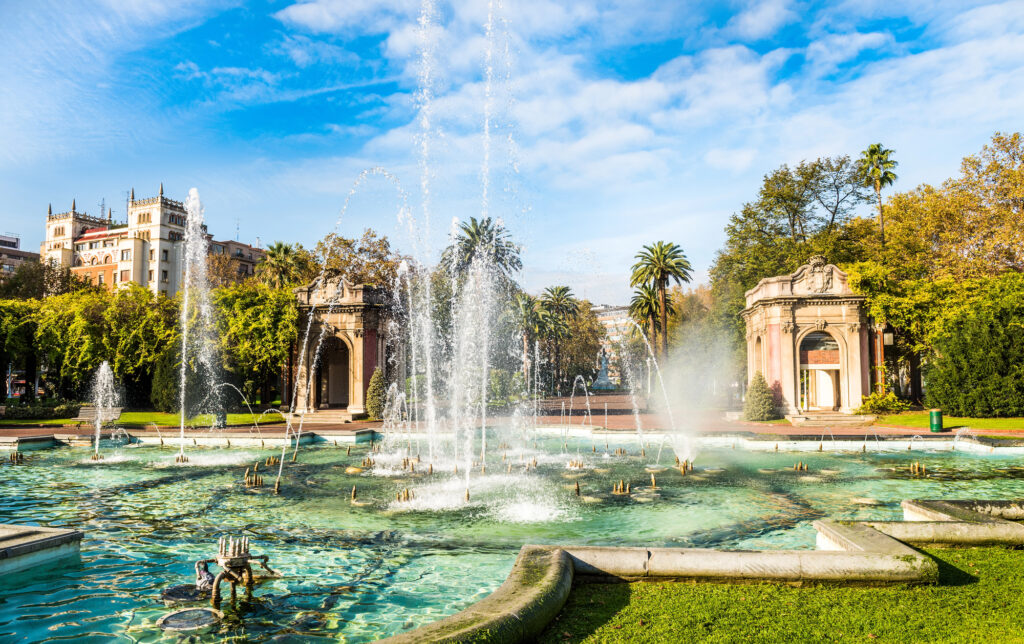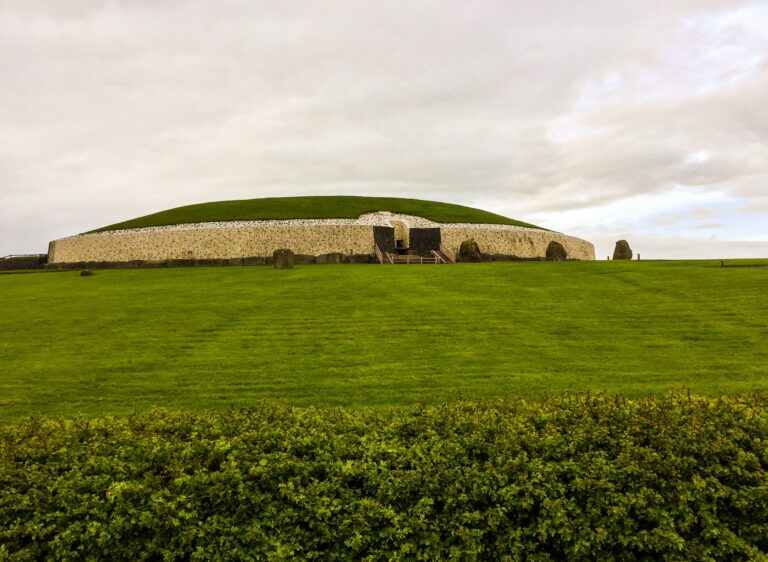Travel Reboots: 20 Destinations That Reinvented Themselves

Curiosity piques when places once brushed aside on the travel map emerge as sparkling gems. From industrial towns turning into cultural hotspots to countries shaking off their tumultuous pasts for a spot in the limelight, these destinations have rewritten their narratives. They now beckon travelers with stories of transformation, offering fresh and compelling reasons to visit. Let’s dive into the tales of 20 such places that have undergone dramatic makeovers, proving it’s never too late for a second chance in the world of wanderlust.
1. Bilbao, Spain (From Industrial Backwater to Architectural Marvel)

Once an industrial city few ventured to explore, Bilbao transformed with the opening of the Guggenheim Museum in 1997. This iconic structure, designed by Frank Gehry, became a magnet for art lovers and tourists alike. The city didn’t stop there; it revamped its riverfront, cleaned up its streets, and introduced a metro system lauded for its design. Today, Bilbao is a vibrant cultural hub, boasting Michelin-starred restaurants, fascinating museums, and a lively old town. This transformation is a textbook example of how art and architecture can breathe new life into a city.
2. Rwanda (From Tragedy to Eco-Tourism Triumph)

Rwanda’s journey from the horrors of genocide in the 1990s to becoming one of Africa’s leading eco-tourism destinations is nothing short of remarkable. Conservation efforts have bolstered the population of mountain gorillas, turning Volcanoes National Park into a must-visit for wildlife enthusiasts. The country has also invested in luxury lodges and community tourism initiatives that promote sustainable travel. Kigali, the capital, shines as a clean, safe, and vibrant city, a testament to Rwanda’s resilience and commitment to renewal. Tourists now flock to Rwanda for its natural beauty, wildlife, and the warm hospitality of its people.
3. Detroit, USA (Motor City’s Cultural Revival)

Once the heart of America’s automotive industry, Detroit faced steep decline and bankruptcy. However, the city has seen a resurgence, led by a booming arts scene and grassroots initiatives. Abandoned buildings have been transformed into galleries, shops, and co-working spaces. The city’s culinary scene is also on the rise, with new restaurants and cafes breathing life into historic neighborhoods. Detroit’s comeback story is a powerful reminder of how community spirit and creativity can revive a city’s fortunes.
4. Medellín, Colombia (From Narco Capital to Innovation City)

Medellín’s transformation is one for the history books. Once infamous as the stronghold of Pablo Escobar and drug cartels, the city has reinvented itself as a hub of innovation and culture. Public investments in education, transportation, and public spaces have played a crucial role. The city’s cable car system, for instance, not only provides stunning views but also connects marginalized neighborhoods to the city center. Today, Medellín is celebrated for its vibrant art scene, bustling nightlife, and progressive policies.
5. Lisbon, Portugal (Economic Downturn to Tourism Boom)

Lisbon turned its economic crisis on its head to become one of Europe’s hottest destinations. The city’s affordability attracted digital nomads and artists from around the world, creating a dynamic, creative culture. Renovation projects have brought new life to historical areas, while the food scene showcases a blend of traditional Portuguese dishes and international cuisine. Lisbon’s sunny weather, stunning architecture, and friendly locals add to its allure. This resurgence has placed Lisbon firmly on the travel map as a city of beauty, history, and innovation.
6. Valparaíso, Chile (Seaport City’s Artistic Renaissance)

Valparaíso, once a bustling seaport, faced decline as shipping routes changed. It has since blossomed into an artistic enclave, renowned for its brightly colored houses and stunning street art. Local artists have transformed the city’s hillsides into a canvas, making it a living art gallery. This revival has spurred a wave of boutique hotels, gourmet restaurants, and creative workshops. Valparaíso is now a testament to how art and community can inject new life into old spaces.
7. Krakow, Poland (From Industrial Center to Cultural Capital)

Krakow has shifted from a forgotten industrial city to Poland’s cultural capital. Its well-preserved medieval core, including the stunning Wawel Castle and the historic Jewish quarter of Kazimierz, offers a deep dive into history. Beyond its past, Krakow buzzes with contemporary art galleries, vibrant nightlife, and an innovative culinary scene. The city hosts numerous festivals, showcasing its rich tradition and contemporary creativity. Krakow embodies the seamless blend of historical reverence and modern vibrancy.
8. Seoul, South Korea (Rapid Modernization with a Heart)

Seoul’s rapid transformation from the ruins of the Korean War to a leading global city is astounding. It balances cutting-edge technology and modern skyscrapers with traditional palaces and street markets. The city’s commitment to green spaces is evident in projects like the Cheonggyecheon Stream and Seoullo 7017 skygarden. Seoul’s food scene, from street food stalls to Michelin-starred restaurants, is a culinary adventure. This city demonstrates how rapid modernization can coexist with cultural preservation.
9. Tallinn, Estonia (Medieval Charm Meets Digital Innovation)

Tallinn stands out as a unique blend of medieval history and digital innovation. Its well-preserved Old Town, a UNESCO World Heritage site, transports visitors back in time. Yet, Tallinn is also one of the world’s most digitally advanced societies, offering e-residency to global entrepreneurs. This mix of ancient charm and innovation attracts a diverse crowd, from history buffs to tech enthusiasts. Tallinn proves that even the oldest cities can lead in the new digital age.
10. Naples, Italy (Shedding the Shadow of the Mafia)

Naples is casting off its reputation overshadowed by the Mafia, welcoming a new era of tourism and culture. Efforts to combat crime and clean up the city have paid off, unveiling its rich history, art, and culinary excellence to the world. Naples is the birthplace of pizza, offering an authentic taste of this global favorite. Its historic sites, like the ancient ruins of Pompeii and the stunning Amalfi Coast nearby, are unmatched. Naples’ transformation is a story of resilience, proving that even places with troubled pasts can reinvent themselves.
11. Glasgow, Scotland (From Industrial Powerhouse to Cultural Maven)

Glasgow’s transition from an industrial behemoth to a cultural maven is inspiring. The city has embraced its rich artistic heritage, becoming a UNESCO City of Music and hosting the renowned Glasgow School of Art. Its revitalized riverfront, once lined with shipyards, now features museums and concert halls. Glasgow’s food scene is booming, offering everything from traditional Scottish fare to international cuisine. This city’s journey from industrial grit to cultural glamour is a beacon for urban renewal.
12. Beirut, Lebanon (Rising from the Ashes of Conflict)

Beirut has repeatedly risen from the ashes of conflict, each time reinventing itself with resilience. Today, it’s a city of contrasts: historical sites stand alongside modern architecture, and vibrant nightlife pulses through streets filled with history. Initiatives to preserve its cultural heritage, alongside a burgeoning art scene, have breathed new life into the city. Beirut’s culinary landscape is a testament to its resilience, offering a fusion of flavors that tell the story of its complex history. The city’s ability to bounce back is a testament to the indomitable spirit of its people.
13. Ljubljana, Slovenia (Europe’s Green Capital)

Ljubljana, once a city you’d hardly find on a tourist map, has transformed into Europe’s green capital. It was the first European city to adopt a zero-waste policy, significantly reducing its environmental footprint. The city center is largely car-free, making its charming streets and riverbanks a joy to explore on foot or by bike. Ljubljana’s commitment to sustainability hasn’t gone unnoticed, earning it numerous international accolades. This green makeover has made Ljubljana a model for sustainable urban development and a delightful discovery for eco-conscious travelers.
14. Hanoi, Vietnam (From War-Torn City to Cultural Jewel)

Hanoi has navigated its way from a war-torn past to emerge as a vibrant cultural jewel. The city’s Old Quarter, with its narrow streets teeming with life, offers a glimpse into its 1,000-year history. Hanoi embraces its past while boldly stepping into the future, evident in its burgeoning arts scene and innovative cuisine. Lakes, parks, and colonial architecture provide tranquil escapes within the bustling city. Hanoi’s evolution is a captivating tale of resilience, culture, and renewal.
15. Accra, Ghana (Africa’s Rising Star)

Accra is shedding its image as just another stopover to reveal itself as Africa’s rising star. The city thrives on its rich cultural heritage, seen in its music, art, and festivals. Modern Accra buzzes with creativity, home to fashion-forward designers and vibrant street art. It’s also becoming a hub for tech startups, drawing young entrepreneurs from across the continent. Accra’s transformation into a lively, creative city underscores the dynamic shifts happening across Africa.
16. Pittsburgh, USA (From Steel to Tech and Culture)

Pittsburgh has turned its steel city legacy into a beacon of technology and culture. The city’s universities and hospitals are at the forefront of innovation, attracting tech companies and startups. Neighborhoods once filled with factories now house galleries, theaters, and music venues. Pittsburgh’s food scene is a mix of traditional Eastern European dishes and cutting-edge culinary trends. This city exemplifies how industrial towns can pivot to become centers of creativity and technology.
17. Oslo, Norway (Leading the Charge in Sustainability)

Oslo is leading the charge in sustainability, setting an example for cities worldwide. It aims to become carbon neutral by 2030, with initiatives like car-free zones, eco-friendly public transport, and energy-efficient buildings. The city’s green spaces and commitment to conserving its natural surroundings are integral to its identity. Oslo also boasts a vibrant cultural scene, with museums and galleries highlighting Norwegian art and history. This blend of environmental ambition and cultural richness makes Oslo a pioneering city of the future.
18. Phnom Penh, Cambodia (A New Chapter Beyond Turmoil)

Phnom Penh is writing a new chapter, moving beyond its tumultuous past towards a bright future. The city’s royal palace and colonial buildings reflect its rich history, while new developments signal its rapid modernization. Phnom Penh’s burgeoning arts scene and bustling markets are signs of its vibrant cultural life. Efforts to preserve history while embracing growth have made the city a fascinating study in contrast and resilience. Phnom Penh’s transformation is a beacon of hope and renewal, inviting travelers to witness its rebirth.
19. Helsinki, Finland (Innovation and Design Capital)

Helsinki has firmly established itself as a capital of innovation and design. The city’s design district, with its array of studios, shops, and galleries, showcases the best of Finnish creativity. Helsinki’s commitment to public spaces and environmental sustainability exemplifies its forward-thinking approach. The city hosts Slush, one of the world’s leading startup events, attracting tech enthusiasts from around the globe. Helsinki’s blend of design, technology, and quality of life makes it a model city for the future.
20. Kingston, Jamaica (From Reggae Roots to Cultural Powerhouse)

Kingston, rooted in its reggae heritage, is booming as a cultural powerhouse. The city pulsates with music, from live reggae performances to vibrant dancehall scenes. Beyond music, Kingston is a hub for art, fashion, and food, reflecting the rich tapestry of Jamaican culture. Efforts to revitalize its downtown area and promote cultural tourism are paying off, attracting visitors eager to experience its energy and creativity. Kingston’s evolution from reggae roots to a diverse cultural hub highlights the dynamic spirit of the city and its people.
This article was written by a human and edited with AI Assistance






